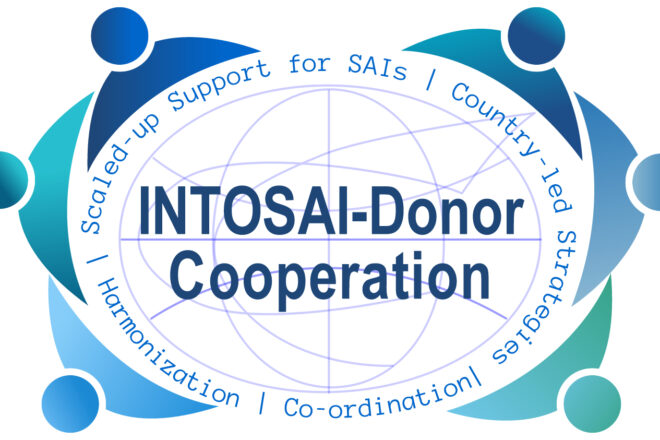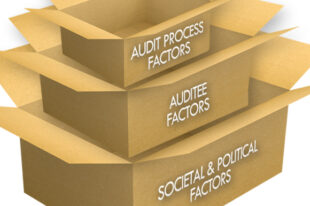Expanding SAI Performance in Developing Countries

In 2009, the International Organization of Supreme Audit Institutions (INTOSAI) and 15 donor organizations signed a landmark Memorandum of Understanding (MOU) to augment and strengthen support to Supreme Audit Institutions (SAIs) in developing countries. The MOU recognized (1) the importance of well-functioning, multidisciplinary and independent SAIs, and (2) support to SAIs from both the INTOSAI and Donor communities could be more effective. Some seven years later, eight additional donor organizations have endorsed the MOU. Phase one of the INTOSAI-Donor Cooperation (the Cooperation) took place June 2010-December 2012, and phase two from 2013-2015.
SAI PERFORMANCE IN DEVELOPING COUNTRIES HAS IMPROVED
The Cooperation’s purpose is to expand SAI performance in developing countries. PEFA data from the 2010-2014 (indicators PI-26 and PI-10, criteria iv) “Global SAI Stocktaking Report 2014-Performance, Capacities and Needs of SAIs” and the “INTOSAI-Donor Cooperation Stocktaking Report 2010-Capacity Development of Supreme Audit Institutions; Status, Needs and Good Practices” reports show SAI operations are, in most indicators and income groups, improving. For example, the percentage of SAIs with strategic plans has increased from 63% in 2010 to 90% in 2014. This is good news, and the Cooperation is proud to have contributed to positive progression. However, it is important to emphasize (1) SAI performance measures can be challenging due to data complexity and limitations and (2) the results are also not exclusively related to the Cooperation’s work.
In an independent evaluation conducted in 2015, the Cooperation’s relevance was affirmed, particularly due to the organization’s role in SAI capacity building. While evidence also pointed to positive behavioral changes from SAIs and donors alike, there were some Cooperation activities that faced implementation challenges. The steering committee is now working to address those challenges.
HIGHLIGHTS-PHASE II
Scaled-up support to SAIs. Over the program period, the Cooperation has made important contributions to scaled-up support for SAIs. The average annual value of support for SAI capacity development increased from $54 million in 2012 to $68 million in 2015, generally indicating increased global SAI support. The SAI Capacity Development Fund was also established, resulting in the funding of seven projects with grant awards to the tune of $2.6 million by the end of 2015.
Global Calls for Proposals help attract funding. The GCP is a mechanism aimed at providing all SAIs, INTOSAI regions and INTOSAI bodies with the opportunity to put forth demand-led proposals founded on the needs of SAIs in developing countries. The GCP has contributed to SAIs playing a more active role in articulating needs and priorities on the basis of their strategic plans.
The 2013 GCP was launched at the INTOSAI Congress in October 2013. Forty-seven draft applications were received, and financial support sought totaled $57 million. The INTOSAI-Donor Secretariat provided support geared toward enhancing the quality of the project proposals, which were subsequently shared with potential donors for consideration. According to available information, funding was secured for 53% of the proposed initiatives by September 2015, a figure that is slightly higher than the 2011 GCP of 45%.
SAI Performance Measurement Framework (SAI PMF). SAI PMF has been developed under the auspices of the INTOSAI Working Group on the Value and Benefits of SAIs and was implemented under the stewardship of INTOSAI in collaboration with the donor community. The Cooperation has provided support to the SAI PMF through financing the Secretariat as the coordinator of the SAI PMF Task Team, as well as through global assessments support. Since its inception in 2011, the SAI PMF has steadily been recognized as the single performance measurement framework for SAIs and is expected to be endorsed at the 2016 INCOSAI.
As of December 2015, 840 people from all INTOSAI regions have been trained on SAI PMF, 53 of which have also delivered training. By early 2016, the number of SAIs making the decision to perform a SAI PMF assessment (or progressed further with the assessment) amounted to 47.
The SAI Capacity Development Database (Database). The database (www.saidevelopment.org) is used by SAIs and donors to (1) improve SAI support coordination; (2) facilitate Global Calls for Proposals; and (3) generate global data on levels and distribution of SAI Capacity Development support. Nearly 400 projects were registered (including planned and proposed projects) as of December 2015, a steady increase from the 260 projects registered in 2012. In 2015, additional efforts were made to increase the accuracy of the data through entry reviews and updates.
Knowledge sharing. The Cooperation has contributed to capturing and sharing knowledge regarding SAI capacity development, most notably through the “Global SAI Stocktaking Report 2014—Performance, Capacities and Needs of SAIs” and the “INTOSAI-Donor Cooperation Stocktaking Report 2010—Capacity Development of Supreme Audit Institutions: Status, Needs and Good Practices.” Furthermore, a learning event for international development agency staff on “Working with Supreme Audit Institutions” has been established and is delivered upon request. The Cooperation has also contributed to relevant research projects, including a survey on SAIs and citizen engagement practices under the Effective Institutions Platform and a paper on Extractive Industries Audit.
Communication. The Cooperation has published quarterly newsletters since 2014 and has been represented at several international development fora and conferences in coordination with the INTOSAI Capacity Building Committee (CBC).
THE WAY FORWARD
The Program Document for phase three of the Cooperation (2016-18) has been approved, and the Cooperation will see some changes (when compared to phase two). The Steering Committee (SC) welcomed the independent evaluation report as it provided strategic input into the Cooperation’s future direction and strengthening; and led to the establishment of working groups to review and make recommendations on (1) the continuing relevance of primary activities supported by the Cooperation and (2) ways to enhance and strengthen the impact of Cooperation activities. The outcomes of the working groups’ deliberations will be considered by the SC throughout 2016.
The role of the Cooperation regarding SAI PMF will change after 2016. SAI PMF will be mainstreamed into INTOSAI systems and will no longer be funded through the Cooperation, nor will it be supported by the Secretariat. However, members of the Cooperation will retain an interest and influence through an advisory function. While the work to develop a SAI PMF Strategy is now being taken forward under the INTOSAI Capacity Building Committee, the SC is being consulted as to the purpose and set-up of the SAI PMF advisory role.
SAI PMF Virtual Community in French. The French Version of the SAI PMF Virtual Community (VC) officially launched August 15, 2016. The VC is now active in English, Spanish and French. The French-speaking SAI PMF community includes more than 140 members with SAI PMF skills from the AFROSAI, ARABOSAI, CAROSAI, OLACFES, CREFIAF, EUROSAI regions.
Originally unveiled December 2014 on behalf of the Working Group on the Value and Benefits of SAIs, this virtual platform permits certified assessors to (1) access relevant material for SAI PMF assessments and (2) raise questions about the tool and process through dedicated discussions. The platform provides support to users, as well as to developers of the SAI PMF through feedback.
All assessors who have attended SAI PMF training have user profiles for virtual platform use. If you are a certified assessor and have not received an e-mail with a user profile, please contact INTOSAI.Donor.Secretariat@idi.no.





